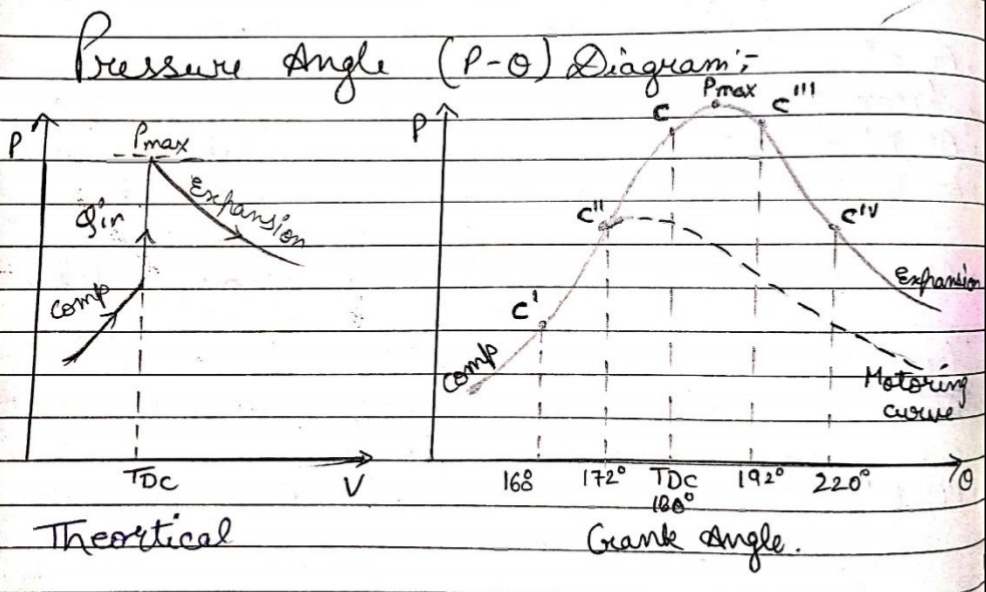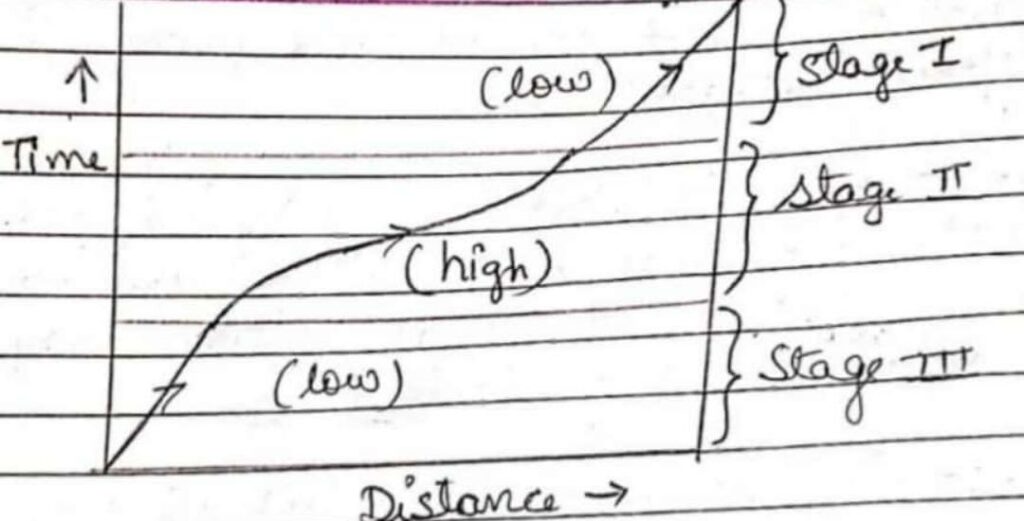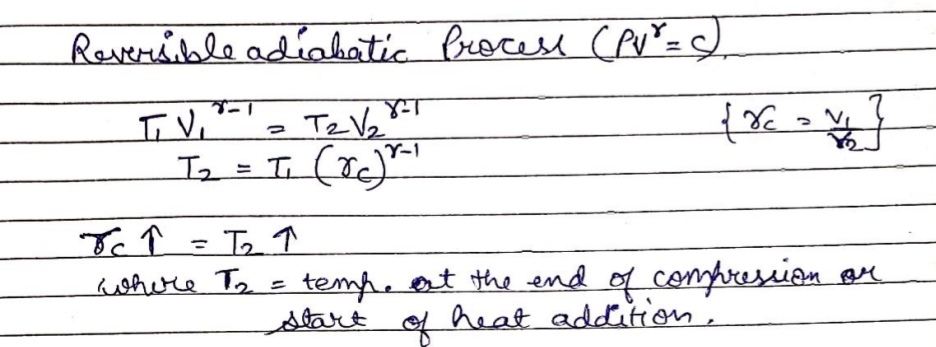An Internal combustion engine is a device that uses the chemical energy released by the fuel in the form of heat for producing mechanical work. It may be defined as a relatively rapid chemical combination of hydrogen and carbon in the fuel with the oxygen in the air resulting in the liberation of energy in the form of heat. Combustion is a very complicated phenomenon and has been a subject of intensive research for many years.
Conditions necessary for combustion are:-
- The presence of a combustion mixture.
- Some means of initiating combustion.
- Stabilization and propagation of flame in the combustion chamber.
Pressure Angle(P-ϴ diagram):-

In actual cycle, heat addition takes place in three different stages:-
Stage 1: Fuel is below its flash point temperature only sparking takes place without ignition. This stage is known as Period or Ignition lag.
Stage 2: Fuel is above its flash point temperature but below its fire point temperature. Hence, both sparking and ignition take place.
Stage 3: Fuel is above its fire point temperature. Hence, cut off takes place. This stage is also known as “After Ignition.”
Motoring Curve:- Its is the P-ϴ diagram without ignition (only compression and expansion occurs directly).
Flame Propagation Speed:-
The spread of the flame inside the engine cylinder is known as Flame propagation speed. The rate of propagation radially of the flame is known as flame propagation speed. The SI unit of flame propagation speed is m/s. It tells us about how rapidly fame propagates from a reference point.

Stage 1:– Flame Propagation Speed is low because only sparking takes place and also due to lack of Turbulence.
Stage 2:– Flame Propagation Speed is high because of increases in turbulence and combined action of sparking and ignition.
Stage 3:– Flame Propagation Speed is low because fresh air fuel mixture gets diluted by the exhaust gases.
Factors Affecting Flame Propagation Speed:-
1)Initial Pressure and Temperature:-Flame propagation speed increases due to an increase in initial temperature and pressure, ignition delay or delay period decreases.
2)Compression Ratio (rc):- With an increase in rc, the temperature at the end of compression increases, due to which flame propagation speed will increase.

3)Turbulence:- Due to an increase in turbulence flame propagation speed increases.
4)Engine Speed:- Due to increase in engine speed, turbulence increases. Hence flame propagation speed will increase.
5)Engine Load:- The mean pressure and mean temperature of the engine increase, with the increase in load, due to which flame propagation speed will increase.


